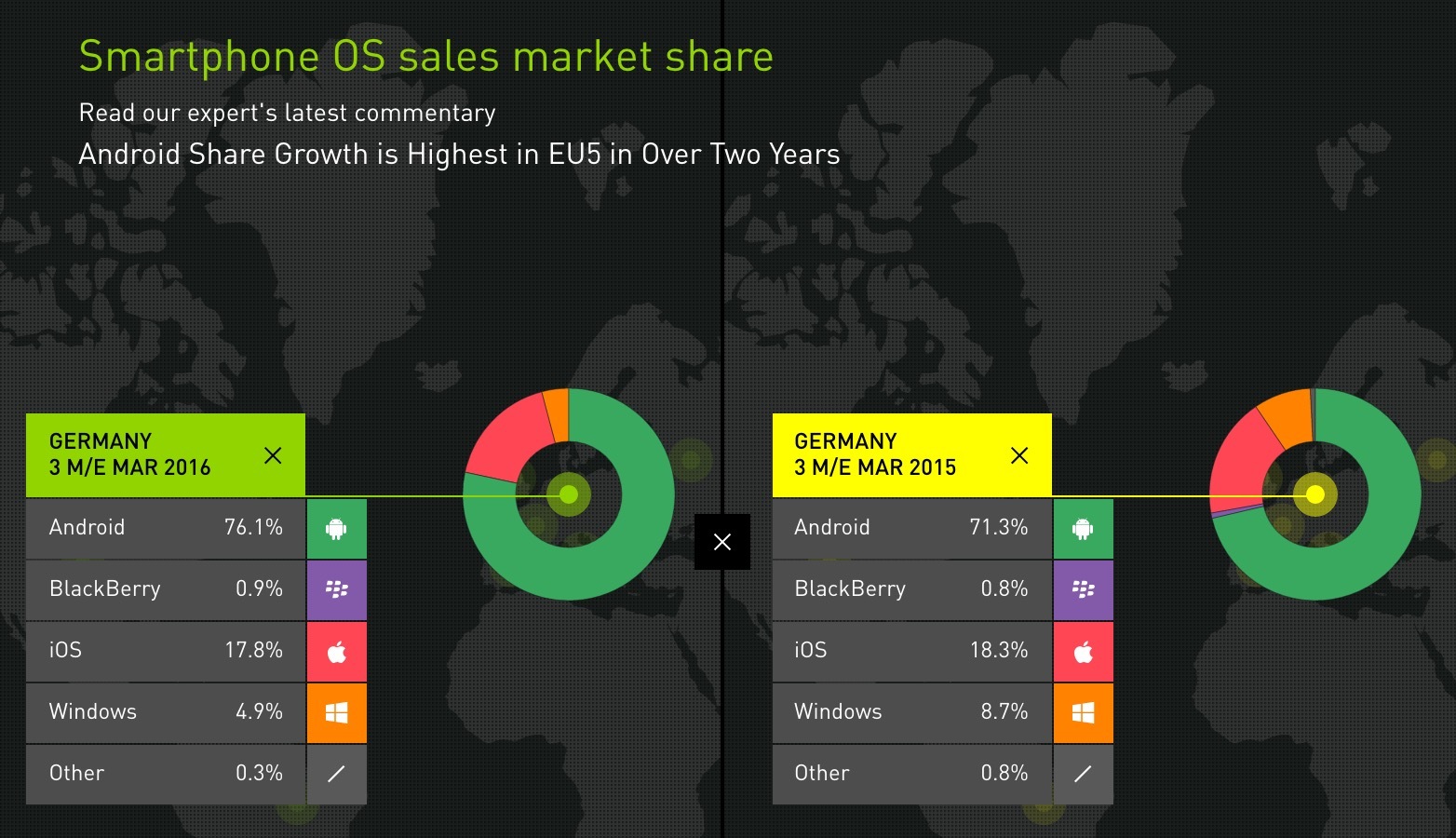Mobile market stagnation forces Apple and Google to poach users

The latest figures show that the share of Apple smartphones in the market continues to decline in comparison with Android devices. According to analysts Kantar Worldpanel, the share of Android in the market is growing in almost all countries - from Europe to China.
In the case of Apple, it was possible to observe continuous growth for almost a decade. Throughout this time, iPhone sales set new records, but in April 2016, Apple reported for the first time about a 16% decline in sales at an annualized rate. Against this background, sales of smartphones with Android continue to grow - in Britain, Germany, France, Italy and Spain, the share of smartphones grew by 7.1% to 75.6%.
')
In the US, the share of devices with Android grew by 7.3% to 65.5%, while in China the growth was 6% to 77%. In the case of iOS, the figures were much worse - the share of the Apple operating system in similar countries in Europe fell by 20.2% to 18.9% to 18.9% over the past quarter. In the Chinese market, the decline was 26.1% with a total share after falling to 21.1%.
“The era of intensive growth in smartphone sales has come to an end. Historically, the deterioration of economic conditions did not affect this segment, but now it is not. Sales of smartphones in North America and China practically do not grow - this figure is 0.4% and 0.7%, respectively, ”said Range Atool, research director at Gartner.
In such a situation on the market, smartphone manufacturers are forced to entice each other's customers to maintain a high growth rate. Google currently wins in this segment. For Apple, the situation can be changed by the iPhone SE smartphone, which is sold at a more affordable price, but still relatively high compared to most popular Android smartphones.
The iPhone SE plays a particularly important role in the Chinese market - mid-range smartphones are the most popular. With a successful launch and high demand in the local market, Apple can occupy a potentially large niche, which will ensure a high growth in sales of the iPhone SE, even with a lower potential profit in comparison with conventional iPhones.
Source: https://habr.com/ru/post/300784/
All Articles